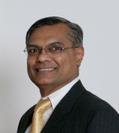Contribute
| Agastya - Transforming Education In India |
Raj Melville
10/02/2008
For more information on some of the organizations in this article: Agastya Video on Video.google.com You can contact me with ideas, suggestions or for more information at: SELokvani@gmail.com You can continue this dialog on my blog at: http://socialecosystem.wordpress.com/
In the heart of Hubli, within the grounds of the Glass House Gardens, is a curious octagonal building. Suresh, my host waited eagerly at its steps and welcomed us inside. Lab benches crammed with dozens of science experiments were lined up along the walls of the large multifaceted hall. To the right, a group of young instructors were busy setting up equipment around an open carpeted area. This is the Agastya Science Center in Hubli, one of several such centers setup by the Agastya International Foundation to bring interactive and engaging science education to the disadvantaged children of India.
Founded eight years ago by Ramji Raghavan, a former banker, Agastya hopes to transform education in India through a scalable and interactive education model. Running counter to the rote and repeat style of learning found in most Indian schools, Agastya’s model encourages discovery, curiosity and experimentation by providing hands on modules that help explain everyday phenomena in simple terms.
Agastya’s central campus is set on a 170 acre lot in Gudivanka at the intersection of the three states of Karnataka, Andhra Pradesh and Tamil Nadu. The location was purchased by the foundation from the Government of Andhra Pradesh after the former Chief Minister saw the significant impact Agastya’s style of education was having on children. Here at the main campus, Agastya works with communities, funnels questions and inputs from its hundreds of classes to create new and interesting approaches and experiments. Ramji speaks passionately about the center and how it serves as the ‘Factory for Ideas’. The center serves as a hub to neighboring schools that bring their classes for a 3 to 4 hour session. In addition the center helps train teachers on the simple tools and techniques that will make it easier to describe the abstract science concepts. Every year the center churns out new models and kits that will be used in classes as well at the various Agastya Science Centers in the districts.
Starting with a barren corner of land, Agastya has applied the same scientific approach and principles to its Gudivanka property to create a model ecological preserve. Applying water retention and reforestation principles to the once barren land, Agastya has now created a green Ecology and Cultural center that shows practical results of sound conservation procedures.
If the Gudivanka campus is Agastya’ factory, then the numerous district science centers are its retail outlets. Placed centrally in the districts around the tri-state area, the Agastya Science Centers serve the local schools within a 20 mile (32 km) radius. Every day groups of excited school children are bussed to the center for a hands-on science module. As I wait at the Hubli Science Center, a fresh batch of neatly uniformed middle schoolers, from a local school troop into the room. The excitement is palpable as the children react to the various experiments laid out for them. A team of young teachers, some just out of high school, circulate among the small teams of students explaining basic concepts with animated demonstrations. Soon the students are working on a dozen projects enthusiastically building, creating and exploring the wonders of science. This particular implementation in Hubli is actively supported by the Deshpande Foundation.
To reach the far flung rural schools that typically have little in terms of facilities or skilled teachers, where multiple grades of students are taught by a single teacher in a one room school, Agastya has pioneered the Agastya Mobile Lab, a science lab on wheels. The Agastya Mobile Lab represents the final mile in Agastya’s distribution network. Packed with over 100 different experiments, the Agastya Mobile Lab mini-van visits schools that are too far from a local Agastya Science Center. At each stop the driver, who is also a trained instructor, unloads the equipment and conducts demonstrations providing the same quality of instruction available at the Agastya Science Centers. Revisiting each rural school several times during the school year, the Agastya Mobile Labs are a ray of fresh insight and inspiration to the children. A typical Agastya Mobile Lab can help over 800 rural teachers and reach over 40,000 students a year. The collection of over 30 Agastya Mobile Labs represents one of the largest science outreach programs in the world.
In spite of being a relatively young organization, the impact of Agastya’s efforts is already being felt. Studies in schools and anecdotal information show the significant change in student attitudes, educational uptake and improvement in overall performance. From a strictly numerical perspective, passing rates for public exams conducted at schools visited by Agastya have shot up from 40% to 96%. Children describe how, for some, Agastya was the first time they got to appreciate science and its applications in the world around us. More importantly children have developed an intellectual curiosity and willingness to examine, question and explore on their own. The young instructors have developed a sense of assurance that was otherwise missing. Young girls command attention and respect from their students, which is often otherwise lacking, and have an air of self confidence and hope. Having touched over 80,000 teachers and 2.5 million children, Agastya is not resting on its laurels. While its current program is the largest hands-on science education in the world, Agastya has an aggressive plan to scale its operations and spread its innovative approach to education across the entire country. The Prime Minister’s National Knowledge Commission has recommended the ‘Agastya model’ for nationwide dissemination. Looking at the eager faces in the Hubli Science Center there is no doubt that they are providing an exciting solution to a critical problem facing India.
You may also access this article through our web-site http://www.lokvani.com/
